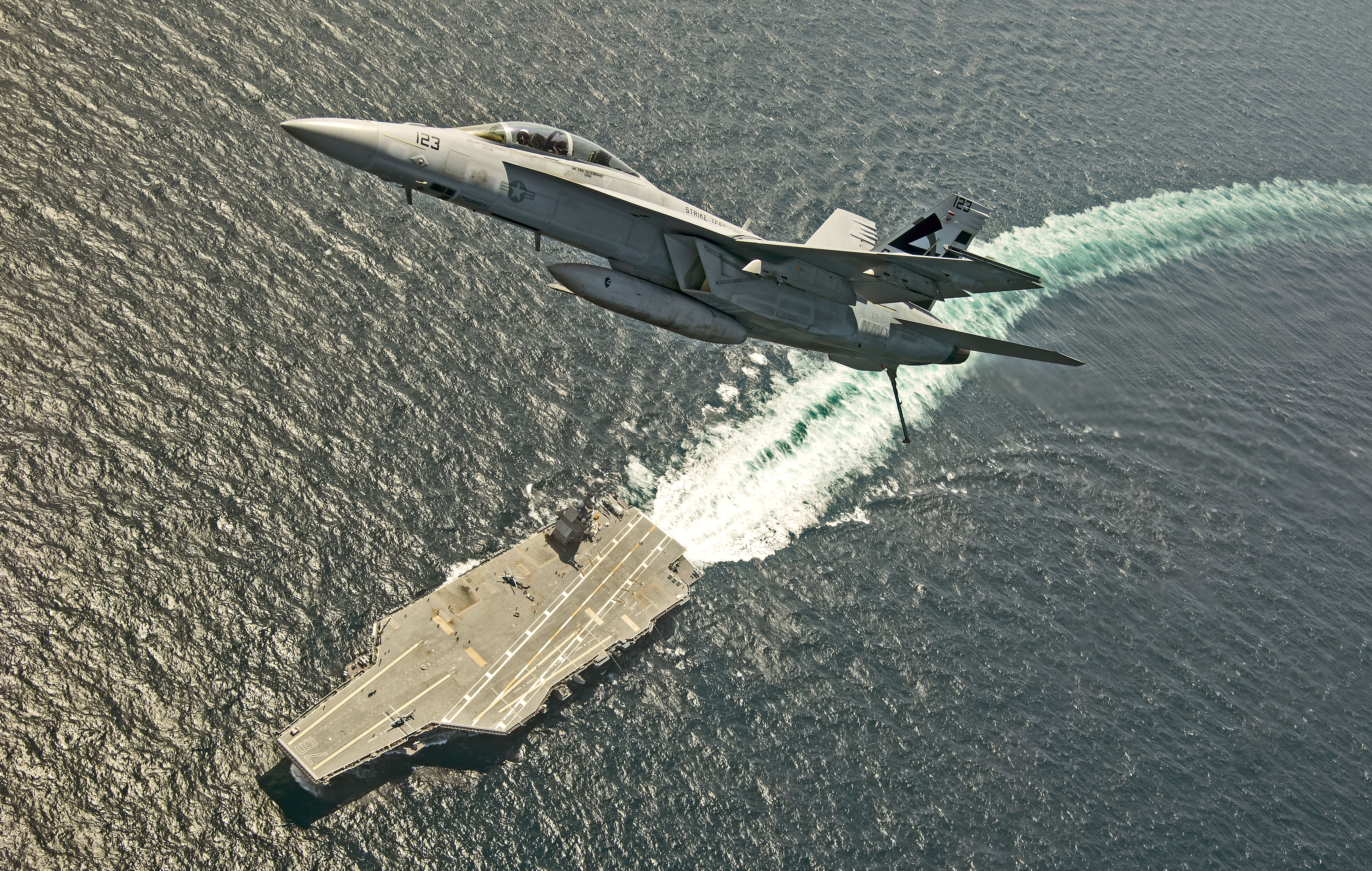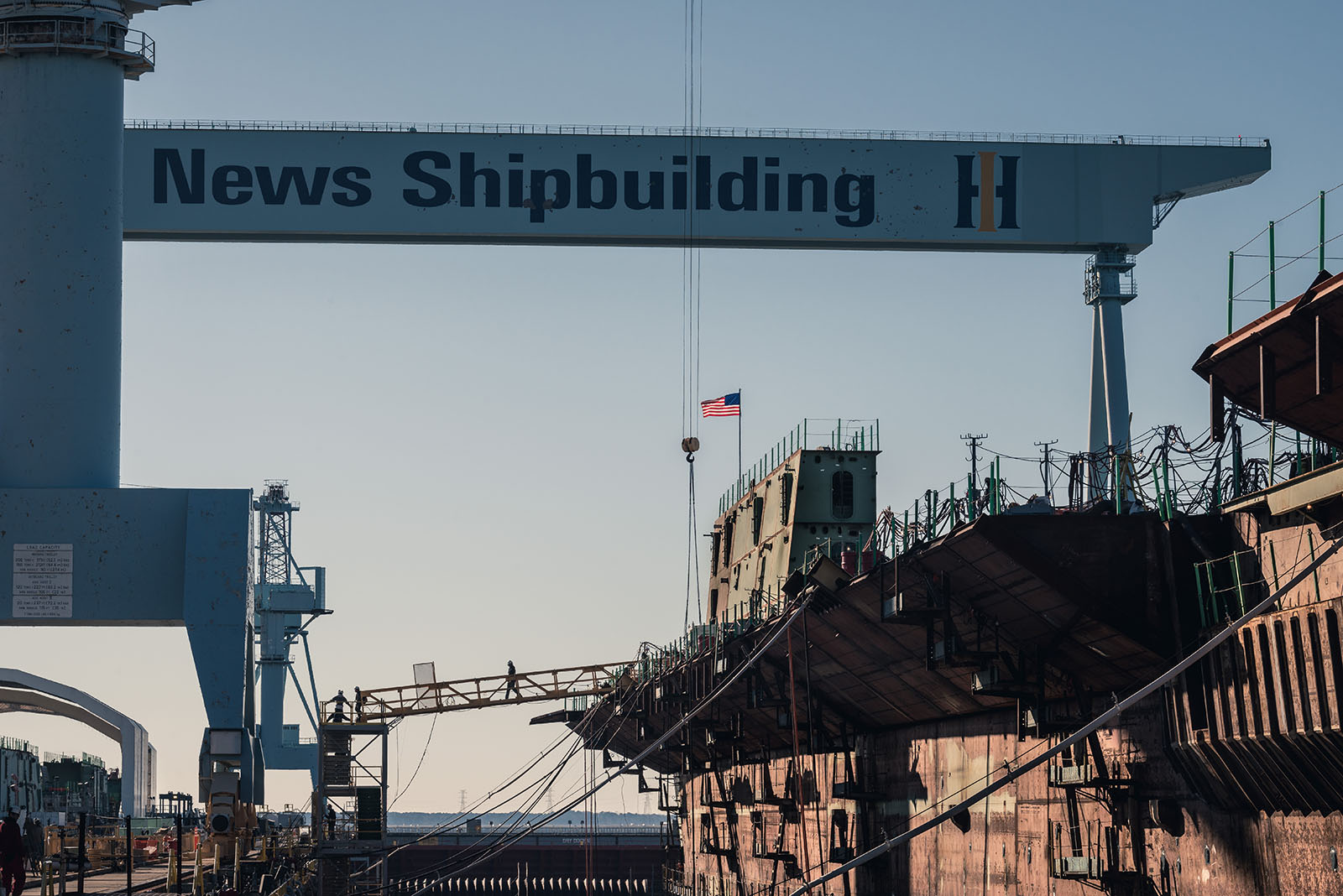
CAPITOL HILL – The Navy’s acquisition chief said the weapons elevators on USS Gerald R. Ford (CVN-78) will be built and installed by the time the ship comes out of its ongoing post-shakedown availability, but he may launch an independent review team to look at the long-term sustainability and reliability of the elevators.
The first-in-class Ford delivered without any of its weapons elevators and conducted its year-long shakedown testing at sea without them. Of the 11 total elevators, two have been produced – with one completing test and certification, and the second nearly done with its testing – Assistant Secretary of the Navy for Research, Development and Acquisition James Geurts said Tuesday at a Senate Armed Services seapower subcommittee hearing.
Geurts said the industry team was making progress to get all 11 elevators built and installed while Ford is still in PSA – a maintenance availability expected to last until the summer of 2019 – but some of the certification may not be completed before Ford heads back out to sea for more testing.
Sen. Tim Kaine (D-Va.) asked about the elevators during the hearing and noted that, when faced with technical challenges on other new technologies in the Ford-class design, the Navy set up independent review teams to find and field solutions quickly.
“I am likely to do an independent review team, not on the immediate construction for CVN-78 but looking at the longer-term sustainability, resilience, reliability, to make sure we’re in a position to support those elevators to the long-term, that we’ve got all the training, all the reliability built into those,” Geurts told the senator.
“We’ve done some mini independent reviews for the 78 elevator design” and wouldn’t need to launch another full-scale review due to a team already tackling the elevator construction and installation for Ford.
Asked about his longer-term concerns on the elevators, Geurts told USNI News after the hearing that “it’s not with the immediate elevator design, it’s making sure we are positioned to support those elevators for the life of the class of ship. And so looking at making sure we’ve got all the right documentation, architecture, plans to deal with obsolescence of parts that might occur over time, reliability, things they may find once they get into the field. So really making sure we’ve got our long-term plan together. It’s not a lack of confidence in the immediate team to work the immediate design, it’s really – what I find these review teams are good at is looking longer term to make sure we’ve got the right strategic mindset to support that system.”
During the hearing, Geurts was also asked about other technologies that have caused headaches for the Ford-class program in recent years: the Electromagnetic Aircraft Launch System (EMALS), the Advanced Arresting Gear (AAG), and the Dual-Band Radar (DBR).
“Of all of the technologies on the CVN-78, of which there were many we’ve proved out on this lead ship, the weapons elevator is the one that’s the last one for us to get tied up and work our way through. I think we’ve got a path there,” Geurts said.
“On both the EMALS program, both the launcher and the (AAG) arresting gear, we’ve had over 747 both catapults and traps on the CVN-78 during its 81 days at sea.. … 24,000 cycle events of that equipment on our shore-based test site there. So we’re feeling pretty confident on both those systems, both on catapults and the arresting gear. Dual-Band Radar, again making good progress there, don’t see any major technical issues with that system as well.”
Asked by subcommittee chairman Sen. Roger Wicker (R-Miss.) if the Navy would be happy it invested in EMALS despite technical challenges during development, Geurts said yes.
“For the carriers of the future to be able to launch everything from fairly heavy fighter craft and some of the others to very light systems like the MQ-25 (unmanned tanker), you need these systems to have the range of capability you need to launch that different air wing of the future. And so while, yes, there’s certainly been technical challenges we’ve had to work through, it really opens up our ability to operate a wider variety of aircraft from the deck, both manned and unmanned, which I think is going to be critical to those carrier effective operations as we look to the future,” the secretary said.

As for the second-in-class carrier, future John F. Kennedy (CVN-79), Geurts said “we’re seeing fairly drastic reductions in labor hours. [Huntington Ingalls Industries’ Newport News Shipbuilding] has proven that once we get this design nailed down, their ability to be efficient in producing those – we’re seeing 16-percent less production labor hours on the second carrier in that class than the first one, and so as we get that design locked down, the efficiencies we expected to see are bearing out in the production phase.”
Geurts said he expects Newport News Shipbuilding will land the island on Kennedy in May 2019 and then launch the carrier from its drydock by the end of the calendar year.
As for future carriers, the Navy and Newport News are in talks about buying CVN-80 and 81 together as part of the first two-carrier buy since the 1980s. The Navy is interested in the idea and has said it could save $2.5 billion or more by purchasing the two carriers together. The House Armed Services Committee seemed to embrace the idea earlier this year, while SASC took more of a wait-and-see approach and wanted more information once Newport News submitted its final proposal.
The decision now rests at the Office of the Secretary of Defense level, and Geurts declined to speculate on how OSD felt about the proposal when talking to reporters after the hearing. He said the Navy’s job was to present its best options to the Pentagon and then execute whatever they decide on. Geurts said during the hearing that he expects a decision by the end of the calendar year, and that punting the decision much farther down the road would start eroding some of the potential for saving money on parts and labor.
However, he said that after months of talks with the shipbuilder, he’s more confident in the savings that can be achieved if the Navy acts now.
“If we go down that path, we will see at least that amount of savings – I would expect more.”





